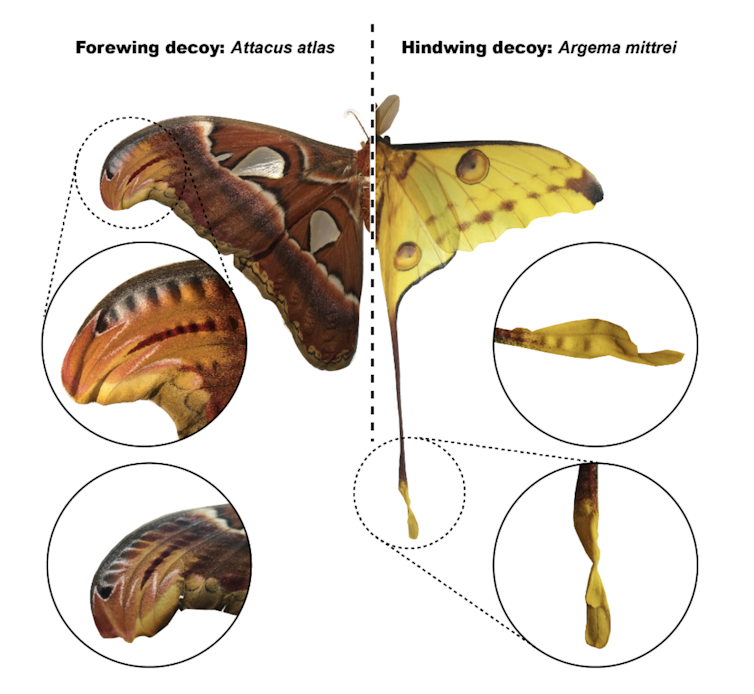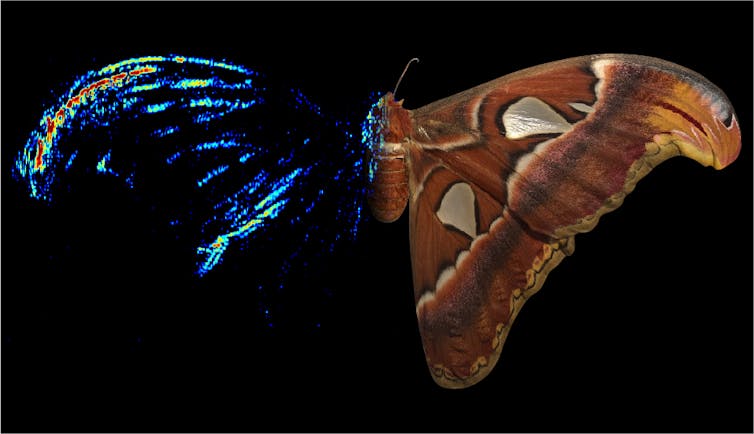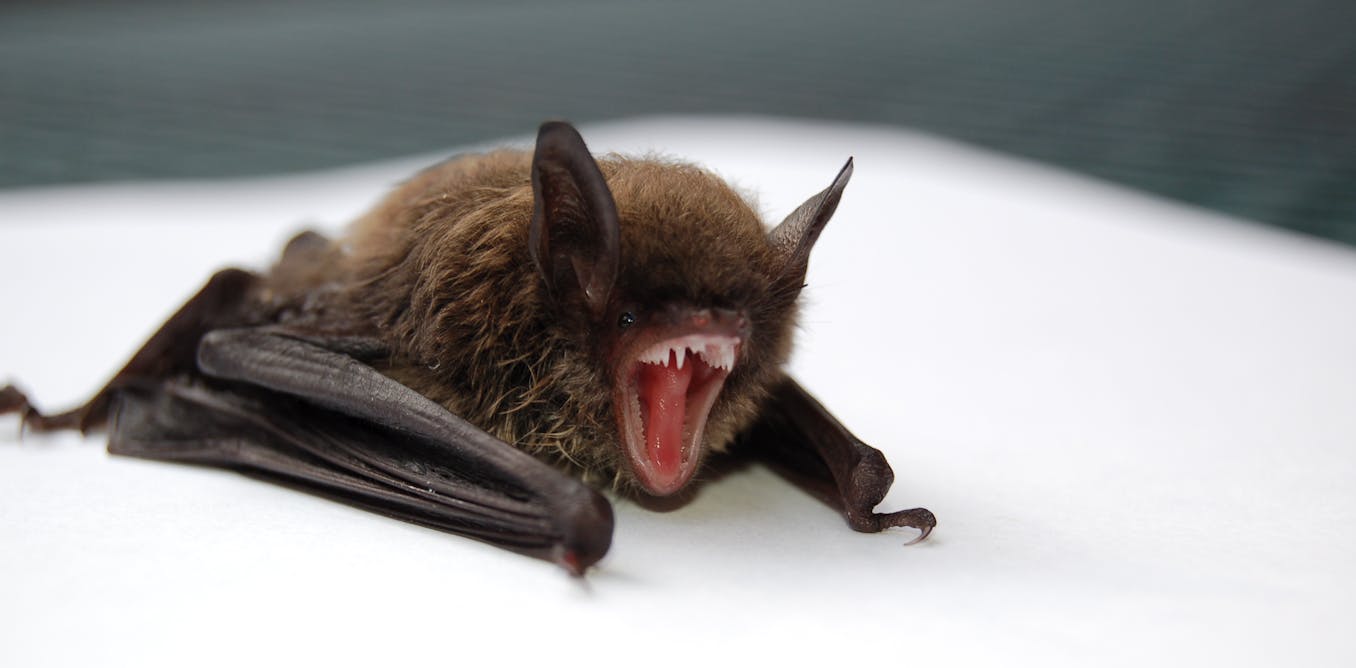Moths use acoustic decoys to dodge bat attacks – new research
These nocturnal insects have amassed an impressive defensive arsenal against bats’ echolocation.
Sept. 20, 2021 • 7 min • Source
In dark skies around the world there unfolds a nightly battle between bats and the nocturnal insects upon which they feast. You’d have thought bats, equipped as they are with echolocation, in which they navigate using sound, would have no trouble gobbling up the apparently clueless insects you see banging against your windows after dusk.
But bats evolved their ultrasonic sensitivity 65 million years ago . That’s more than enough time for natural selection to kick in on the behalf of insects, leading to a host of evolutionary defences that are particularly prevalent and diverse among moths.
Bats have responded to these adaptations in what has become a co-evolutionary arms race between predator and prey. Some have shifted the frequency of their calls to parts of the spectrum that a moth isn’t sensitive to. Other have decreased the amplitude of their calls – essentially “whispering” as they hunt so as to not alert the moth of an impending attack.
Read more: Explainer: the evolutionary arms race between bats and moths
Our recent research has shed light on a particularly unusual technique that silk moths have evolved to come away unscathed from a bat attack: the use of acoustic decoys. Deployed on their wingtips, these throw bats off the scent – or rather the sound – of moths’ bodies, helping them to survive the majority of their encounters.
Evasive action
Most moths are nocturnal, which means they rest during the day and are active at night. That helps them evade the attention of birds, but not the bats with which they share the night sky.
So moths have had to develop a unique defensive arsenal against their shadowy assailants. Many moths have evolved ultrasound-sensitive hearing , allowing them to detect an approaching bat and take evasive action. Others have developed the ability to produce ultrasonic clicks of their own, warning a bat of their unpalatability – or even jamming the bat’s sonar so they can’t hunt effectively.
Many moths have also evolved passive defences which protect them even if they’re unaware of nearby bats. One such defence is acoustic camouflage. Our lab has demonstrated that thorax scales , on the bulbous middle part of a moth’s body, are incredibly good sound absorbers. That means the ultrasonic calls of bats return less of an echo from the moth’s body, allowing the insect to disappear silently into the night sky.
More recently, we’ve shown that scales on moths’ wings provide an equivalent protective benefit, with individual scales vibrating at different frequencies used by hunting bats, dissipating the sound energy used in echolocation. That finding qualified moths’ wings as the first known naturally occurring acoustic metamaterial , where interacting sub-units create acoustic properties exceeding the sum of their parts.
A wing and a prayer
Other moths take a different approach, amplifying rather than deafening the echo that resounds off their wings. These moths don’t have a death wish; they’re throwing out acoustic decoys to make bats target their wingtips rather than their more vulnerable bodies.
Acoustic decoys have previously been identified on the elongated hindwing tails of some silk moths, which end in a twisted structure that produces strong echoes when hit with ultrasound. By deflecting a bat’s attack towards the hindwings, studies have shown these moths can survive around 70% of bat attacks.
Our recent study looked at the curiously rippled and folded wingtips on silk moths’ forewings. We postulated that these structures might serve the same protective function as the elongated hindwings identified in other silk moths.

To test this, we used innovative acoustic tomography to map the regions of a moth’s body and wings that produce the strongest echoes. We hit moth specimens with ultrasound and recorded the echoes, much like how a bat would locate their prey using echolocation.
By doing this from thousands of different angles, we created an image of a moth using sound. This revealed exactly which parts of a moth produce loud echoes and which parts produce weaker echoes.

We tested nine species of moth with varying forewing structures, finding that in the most elaborately shaped moths, the wingtip produced consistently stronger echoes than the body, with an echo strength difference of up to ten decibels.
Next, we wanted to explore the topology of these wingtips to understand how these strong echoes are created. Using a surface-scanning microscope, we identified two types of so-called “ acoustic retroreflectors ” - structures that are shaped in such a way that they always send sound back to its source, regardless of which angle the sound hit at.

Retroflectors work by reflecting sound back to its source through multiple reflections within themselves. It’s a complex mechanism that reveals the extraordinary decoy functionality that has evolved in moth’s wings to put off attacking bats.
The discovery of acoustic decoys helps shed more light on the night-time arms race between bats and moths. Whether bats will be able to counter these deceptive adaptions with enhanced weaponry of their own remains to be seen.
Marc Holderied receives funding from Engineering and Physical Sciences Research Council (Grant EP/T002654/1).
Thomas R Neil receives funding from the EPSRC.



